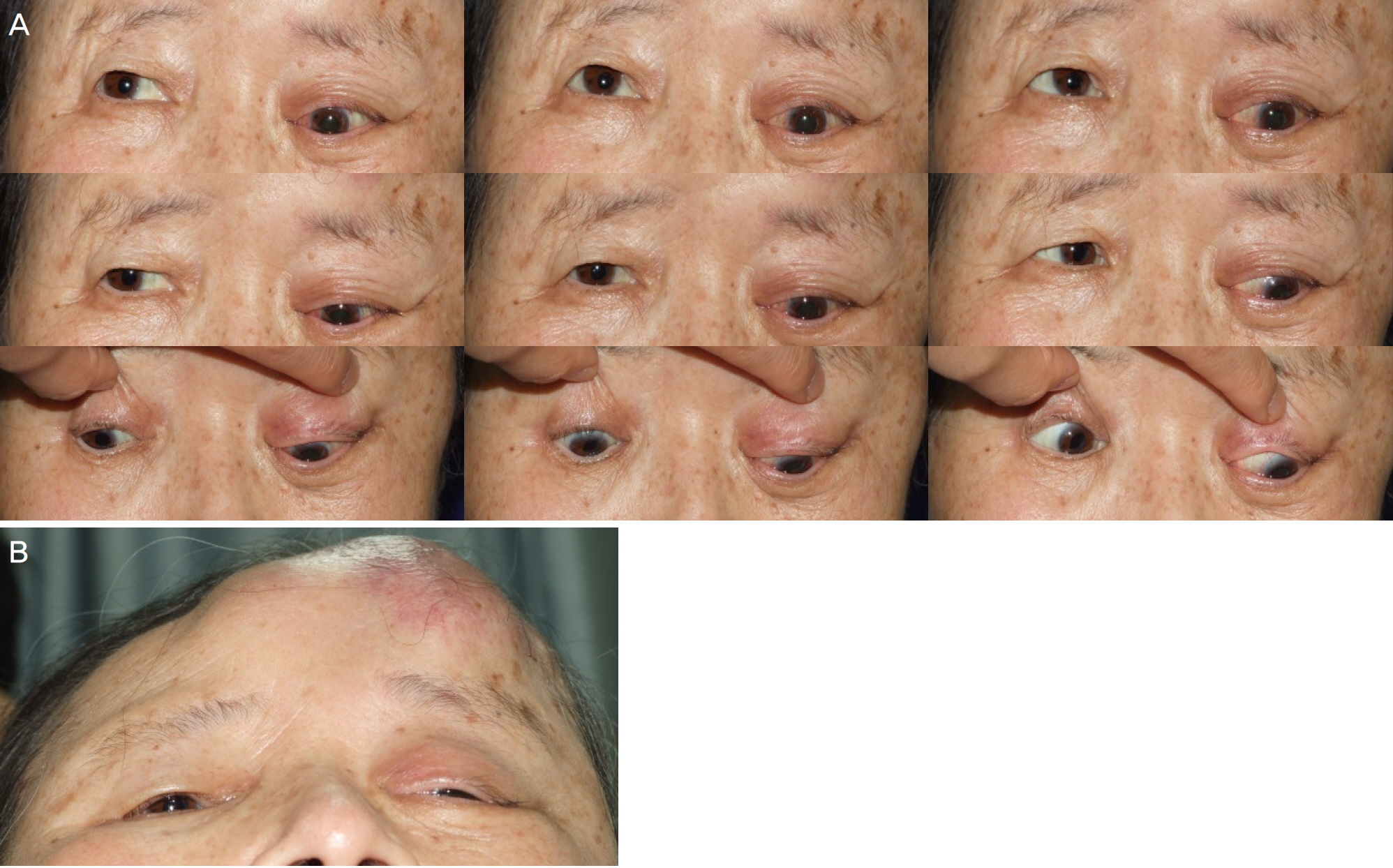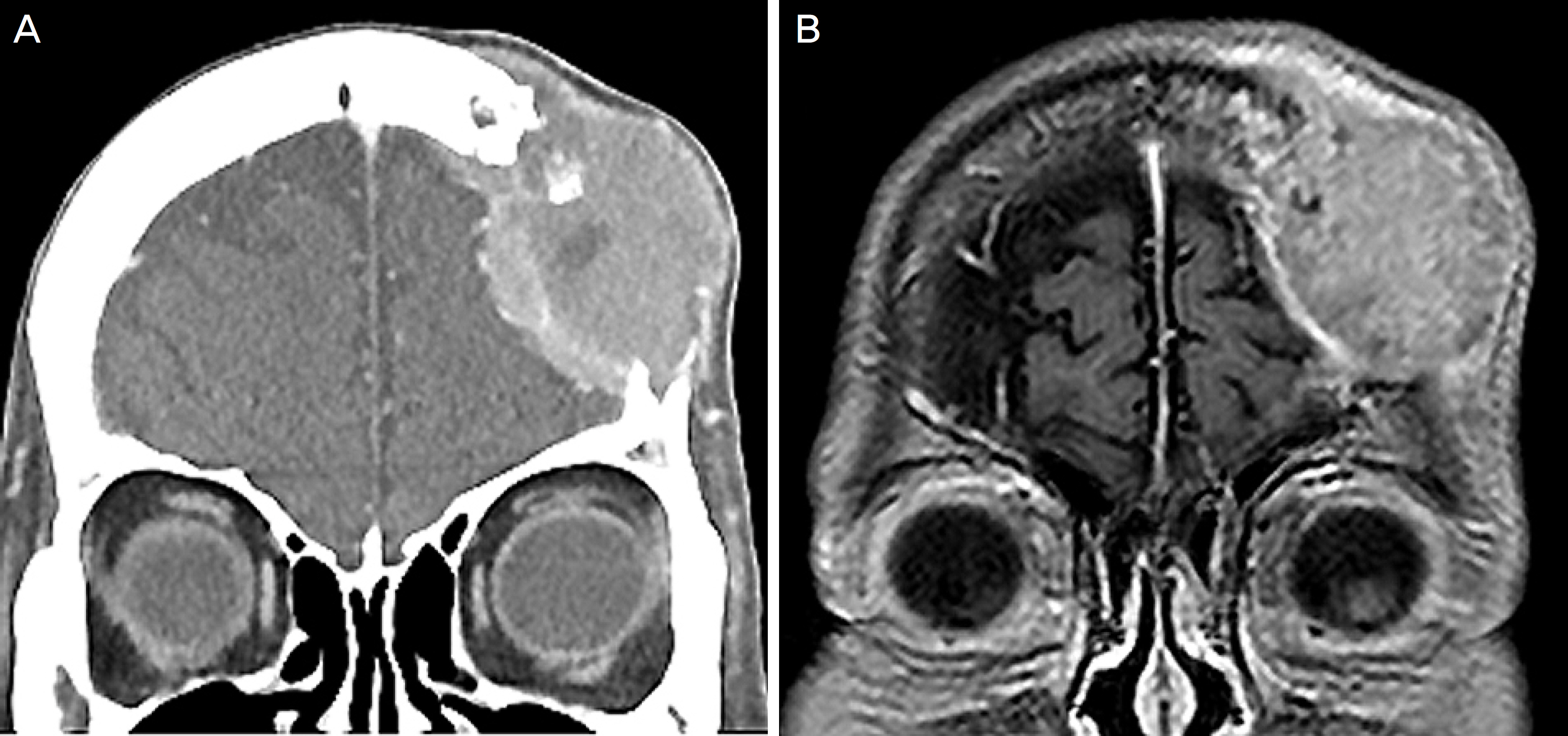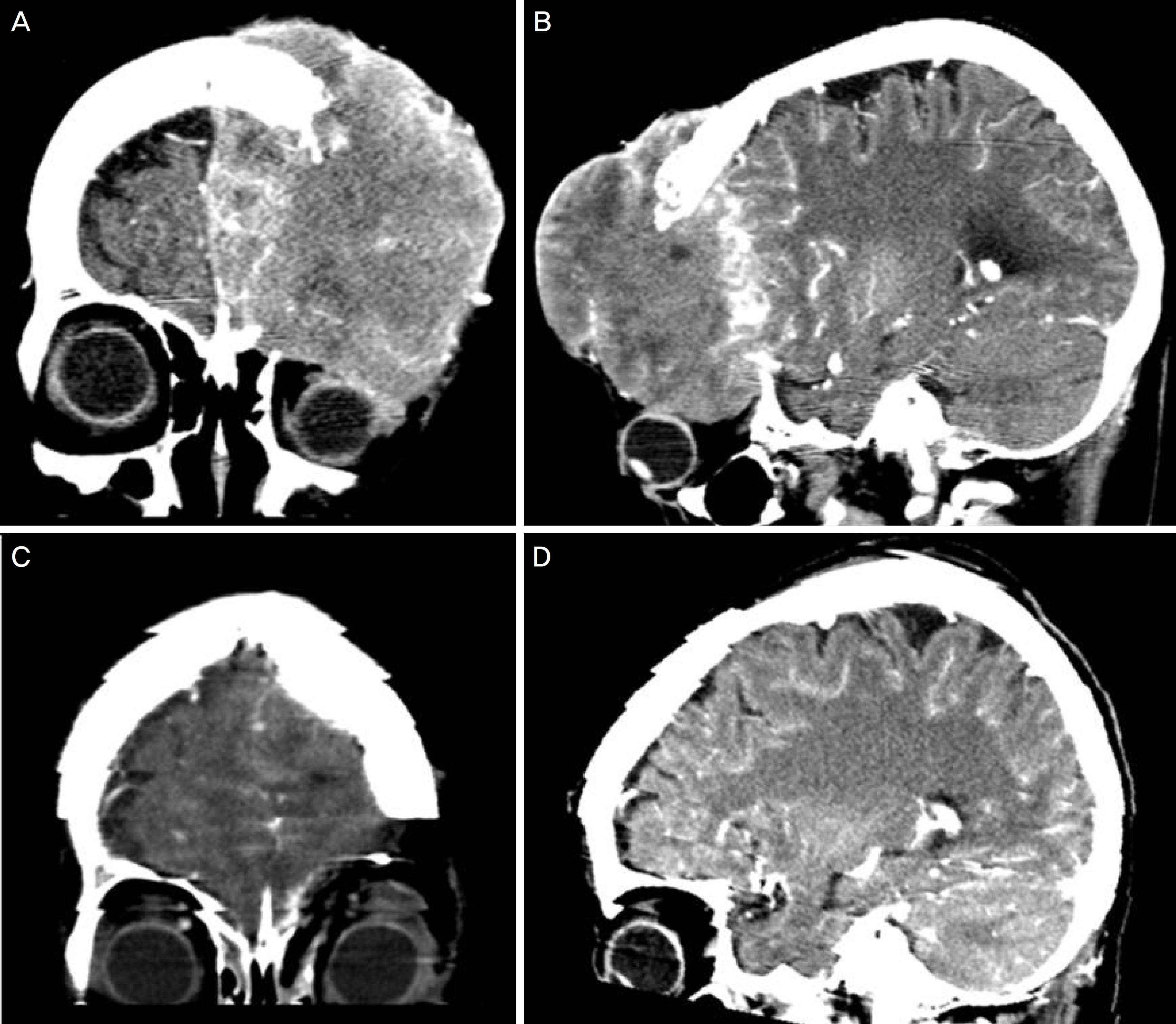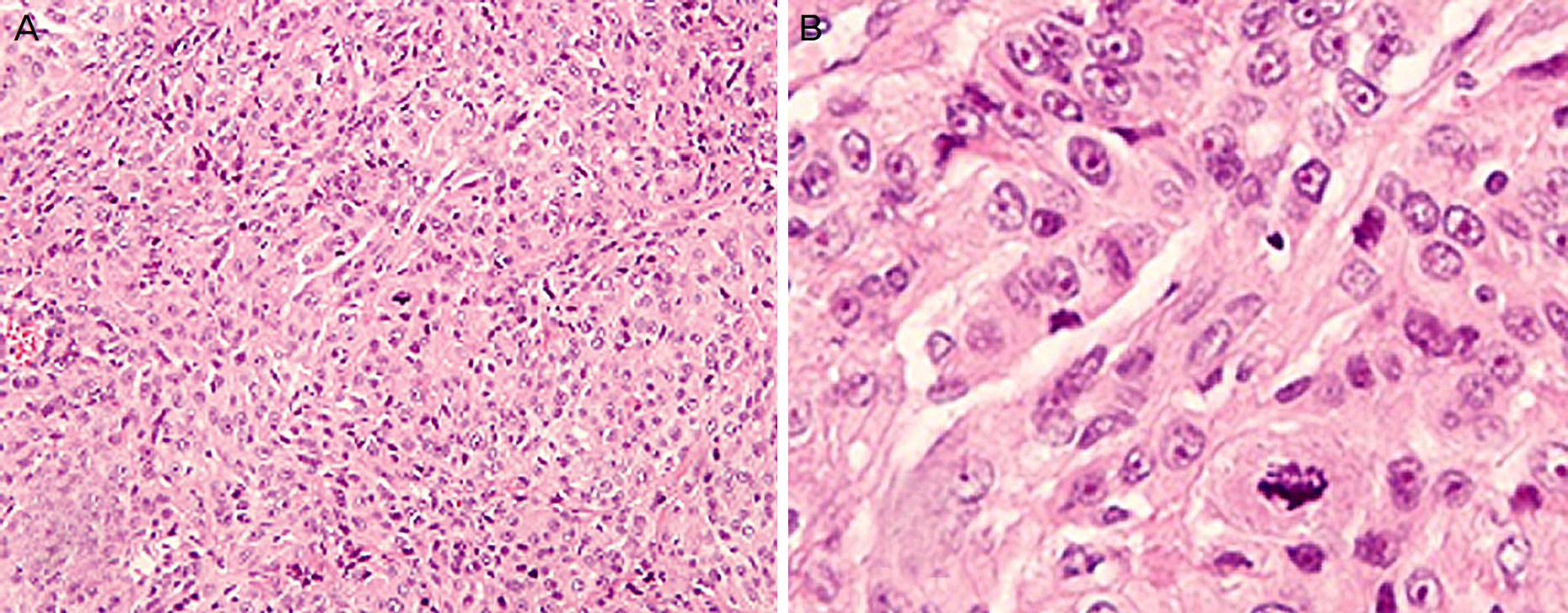J Korean Ophthalmol Soc.
2016 Nov;57(11):1781-1785. 10.3341/jkos.2016.57.11.1781.
A Case of Extra-axial Anaplastic Meningioma with Direct Orbital Extension
- Affiliations
-
- 1Department of Ophthalmology, Kyung Hee University Hospital at Gangdong, Kyung Hee University School of Medicine, Seoul, Korea. pbloadsky@naver.com
- 2Department of Ophthalmology, Kyung Hee University Hospital, Kyung Hee University School of Medicine, Seoul, Korea.
- KMID: 2357736
- DOI: http://doi.org/10.3341/jkos.2016.57.11.1781
Abstract
- PURPOSE
We report the first case of extra-axial anaplastic meningioma with direct orbital extension for differential diagnosis of orbital tumors.
CASE SUMMARY
An 83-year-old woman presented with a protruding left eye and a palpable mass on the forehead. A brain computed tomography scan revealed a huge sarcomatous mass that had directly invaded the surrounding tissues. We removed the tumor by craniotomy and found that it involved the extradural and intradural spaces, brain parenchyma, subcutaneous tissue, left temporalis, orbital roof, and the other frontal lobe across the midline. A cranioplasty was performed, and the orbital roof was reconstructed with artificial bone and bone cement. The final histological diagnosis was anaplastic meningioma. The left eyeball was restored to its normal position 1 month after the surgery. Also, visual acuity and eye movement of the left eye were preserved.
CONCLUSIONS
Direct orbital extension of originated extra-axial cerebral convexity anaplastic meningioma is rare but should be considered in the differential diagnosis of a rapidly growing orbital mass.
Keyword
MeSH Terms
Figure
Reference
-
References
1. Mahnood A, Caccamo DV, Tomecek F, Malik GM. Atypical and malignant meningiomas: a clinicopathological review. Neurosurgery. 1993; 33:955–63.2. Karikari IO, Syed NA, Cummings TJ. Secretory meningiomas of the orbit. Orbit. 2009; 28:408–11.
Article3. Perry A, Stafford SL, Scheithauer BW, et al. Menigioma grading: an analysis of histologic parameters. Am J Surg Pathol. 1997; 21:1455–65.4. Gündüz K, Kurt RA, Erden E. Ectopic orbital meningioma: report of two cases and literature review. Surv Ophthalmol. 2014; 59:643–8.
Article5. Modha A, Gutin PH. Diagnosis and treatment of atypical and abdominal meningiomas: a review. Neurosurgery. 2005; 57:538–50.6. Al-Mefty O, Topsakal C, Pravdenkova S, et al. Radiation-induced meningiomas: clinical, pathological, cytokinetic, and cytogenetic characteristic. J Neurosurg. 2004; 100:1002–13.





